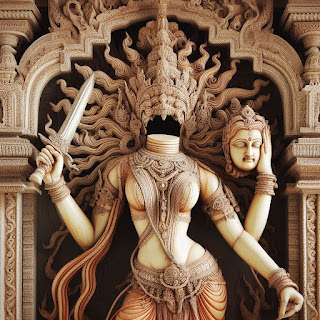An Exploration of Chinnamasta in the Context of the Headless Way
Chinnamasta, often referred to as the Headless Goddess, is a prominent deity in Hindu mythology. She is depicted as a goddess holding her own severed head, with three streams of blood gushing from her neck, nourishing her own body and two attendants. This enigmatic imagery symbolizes self-sacrifice, transcendence, and the cyclical nature of life and death.
In the context of the Headless Way, a philosophical approach to self-inquiry and non-duality, Chinnamasta takes on a profound significance. The Headless Way, inspired by the teachings of Douglas Harding, emphasizes direct experiential realization of one's true nature. It invites individuals to investigate their own consciousness and perceive their fundamental identity beyond physical appearances.
Chinnamasta's portrayal as the Headless Goddess aligns with the central tenet of the Headless Way - the
direct experience of one's formless, boundless awareness. Just as Chinnamasta transcends the limitations of her physical form, practitioners of the Headless Way seek to recognize their essential nature that is beyond the confines of the body-mind.
This ancient deity serves as a potent symbol for those on a journey of self-discovery and spiritual awakening. Chinnamasta's fearless act of self-beheading signifies the shedding of egoic attachments and the realization of the eternal, formless essence that underlies all existence.



.png)
Comments
Post a Comment